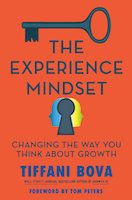I recently ordered an item on Amazon using the app on my phone. All told, the process took less than a minute: I found the item I was searching for after a short scroll through similar products and tapped the “Buy Now” button. Later that day, an email informed me that the items had been shipped and would arrive on my doorstep the next day before 10 p.m. Meanwhile, my credit card was automatically billed.
To our ancestors, Amazon’s retail operation would appear to be a miracle: its seemingly infinite inventory, almost frictionless buying and return process, and nearly immediate front door delivery. To our jaded eyes, the problem lies in those words “seemingly,” “almost” and “nearly.”
If the item promised by 10 p.m. arrived at 9 a.m. the next morning — still amazingly fast by last century’s standards — I’m frustrated by Amazon’s failure to meet my expectations. The added “effort” of waiting for the delivery impacts my feeling toward the company, and even toward the manufacturer of the
product itself. While this one-off delay does not sway me to abandon the brand altogether, if another company came along that better met or exceeded my expectations, I wouldn’t think twice about giving them a chance to win my business.
This is the CX dilemma every modern company faces. B2C retailers like Amazon, Walmart, Target, the UK’s Tesco, Australia’s MECCA, Brazil’s Riachuelo, and Singapore’s Uniqlo have done such an effective job of advancing CX over the past decade that customers not only expect an almost effortless experience but also anticipate a dizzying rate of improvement, companies doing all they can to push “almost” effortless ever closer to “completely.” They vote with their wallets whenever any retailer fails to keep pace.
What Is the Customer Experience Disconnect?
The customer experience disconnect is created when companies invest more into CX technology to provide faster, more seamless services than in their own employees. This leads to disengaged and overburdened employees, which leads to bad customer experiences and diminishing returns on CX investments.
The problem is, in their attempts to keep up with these relentless demands, companies have pivoted too hard in favor of CX.
In Amazon’s pursuit to be “Earth’s most customer-centric company,” by making returns easier than ever, the company now faces additional expenses and logistical supply chain challenges that could wipe out their increased profitability, along with the increased growth and customer loyalty they have realized by constantly striving to improve CX. What has helped keep Amazon sustainable is its sheer size — a small company would not be able to sustain itself under similar circumstances. With that in mind, when making long term investments in CX, you must keep an eye on the downstream impact to profitability.
CX Is More Than “Good Tech”
Superior CX doesn’t come from simply throwing out an innovative new technological feature. This is where many companies stumble. They focus too heavily on the technology without paying attention to the most critical piece: how that tech is used and by whom.
Just look at how much is spent on technology today. A 2020 McKinsey Global Survey of executives found that companies “have accelerated the digitization of their customer and supply chain interactions and of their internal operations by three to four years since the start of the pandemic.” Small and midsize businesses (SMBs) have been investing as well, with an eye on “catering to customer convenience” as a reason to digitize their organizations. Fifty-one percent of growing SMBs accelerated their investments in customer service technology between 2020 and 2021.

Further, 77 percent of information technology (IT) leaders are increasing investment in customer experience, with 93 percent stating that better customer-facing technology is crucial to remaining competitive in the marketplace. The overall customer experience software market is forecast to grow from $167.3 billion in 2021 to $295.7 billion in 2026.
While the spend on CX technology is impressive, many consumers continue to be disappointed. In fact, when customers recall a brand experience, it’s often “human related”: the prepared call center agent, the attentive waiter, the safe driver, the fair salesperson. Call it the experience disconnect: companies tout new technology or snappy design but have not invested in one of the most meaningful aspects of what customers view as an important part of a memorable experience — people. Companies must find ways to create experiences that delight customers through the fusion of humanity and tech.
Every day customers have a choice when they want to buy something. Do they shop and buy online, having the product delivered to their home? Do they buy online and pick up in a store (BOPIS)? Do they “showroom,” in which they shop in a store and then buy online, typically at a cheaper price? Each customer will make a decision based on a few variables, including time and effort, personalized service, seamless experience and price. It doesn’t matter how much money or improvement a company puts into the online purchasing experience; customers will default to which engagement type they want (whether human or digital) based on their expectations and needs, so you must make sure your human-centered services are up to par.
Invest in the Employee Experience
In the name of efficiency and cost reduction, many organizations attempt to achieve a hightouch human feel during online transactions. They use digital tools to give the illusion of human intervention while maximizing scale and productivity. Simple transactions have become quicker and easier by orders of magnitude — and they improve by the day. While this CX related technology has cultivated greater customer loyalty by reducing their effort — making customer transactions seamless and difficult transactions easier — it has had the opposite effect on employees. Some of the improvements hyped by companies are not actually happening via tech alone; rather, they are happening thanks to some human intervention.
For example, in some companies, when customers place an order online, an employee must manually email the receipt as well as add the order to the internal ordering system to be fulfilled. This process is far from automated and seamless for the employee, although it is much more so for the customer.
An employee makes that process happen. Yet customers have no idea, nor do they really care. Once they hit “Order Now,” it doesn’t matter if a human fulfills it — it had better show up when expected. Though the employees are integral to the transaction, they are given little consideration by their employers and the customers they serve. In fact, businesses around the world have spent hundreds of billions of dollars and millions of people hours aligning customer expectations with digital capabilities. But what they seem to often forget is employee experience (EX), the one element that can help offset the diminishing returns of current CX investments, which has been neglected by employers for years.
This neglect has been thrown into sharp focus by the Great Resignation of millions of unhappy employees. Most companies, especially in the United States, believe the only way out of this growing morass is to sink even more money into improving the experience for customers without shoring up employee experience and reducing their effort. These companies lack a clear understanding that improving EX has a meaningful effect on a company’s ability to provide better CX.
CX and EX, long treated as separate worlds, are, in fact, tightly bound—and share a common destiny. Superior CX depends on superior EX. The former can never keep pace with elevating customer expectations without the latter rising in synchrony. What is needed to solve the customer experience dilemma? How can you get beyond the experience disconnect and invest in what contributes to the human aspect of a customer’s experience? How do companies truly become B4C or B4B? For most companies, the answer seems to be hiding in plain sight: empowered, engaged employees who view enriching customers’ lives, or businesses, as the core purpose of the company.
***
Excerpted from The Experience Mindset: Changing the Way You Think About Growth by Tiffani Bova, in agreement with Portfolio, an imprint of Penguin Publishing Group, a division of Penguin Random House LLC. Copyright © Tiffani Bova, 2023.




